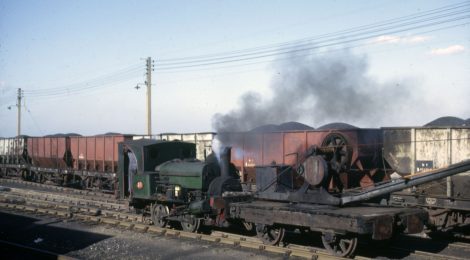
T&I News 8 2019…
Apologies for the fairly lengthy gestation of this report – lots happening and a lot of work on Remaking Beamish to cover as well. Our focus here is on the preparations for the steam fair, and as usual we’ve set some objectives that will endure and improve the visitor experience far into the future. We have one eye on the steam fair and another on the Old King Coal event in June, the weekend of which will make heavy use of the Colliery narrow gauge and standard gauge lines as well as working displays. However, we start with an image, recently purchased, which sums up the sort of atmosphere I have in mind when sketching out some of the small, incremental, developments around the transport infrastructure in the museum…
One for the archive…
Below: This mid 1960s view of No.18 at Seaham Harbour reveals some of the work it was retained to carry out. Almost uniquely it could still reach parts of the harbour the newer steam and diesel locomotives couldn’t, and it was usually engaged on maintenance work and recovery of spilled coal – a reason the 1870s chalrdons also survived in some numbers into the 1960s. The hand crane seen here is rather nice – mounted on a very chaldron-esque chassis. Note the crane ballast box to the rear (on rollers, to enable it to be adjusted to balance the load) and the absence of any brake on the chassis. Not dissimilar to the crane on display in the Colliery area here. We did, incidentally, have a reconstruction of that crane priced many years ago – upwards of £50k being required to bring it to the required standard. Heritage is not cheap! It would still be a lovely project to carry out one day though. I’m not entirely sure about the steam behind the chimney – No.18 did latterly fail with a leak on the dome in that vicinity – perhaps this is an early indication of this fault, or perhaps the safety valve is blowing lightly and the wind carrying the steam forwards. A rather lovely photograph!
Narrow Gauge
Below: Following clearance of a mass of debris and material to the western end of the narrow gauge triangle, work has commenced on laying some recently acquired track panels in this area. A right-hand turnout will give access to the space in the centre of this view, where the stone crusher will be set up along with a shaft-sinking cameo, to bolster the story told by the Sinkers cabin in the adjacent yard (the refreshment outlet).
The aim is to create a working arena for events etc. with good public visibility – the fence alongside the railway and cottages being ideal in this regard. It will also tie in with the Sinkers display and I have sketches for some small revetments and also a contractor’s railway style water tower in this location – which should become an attractive display and greatly improve the area and the visibility of the narrow gauge railway when operating.
Below: We have been lucky to obtain. at no cost to Beamish, two right hand turnouts and 120 feet of track in panels, ex Eastriggs. I wish we could have obtained more! This is very nearly-new 35M rail, with steep sleepers. The system at Eastriggs was extensive and it’s demolition has been a huge boost to the two-foot gauge movement! If anyone did fancy sponsoring some more track, I’d be very happy to hear from them! This track will enable completion of the western head shunt, installation of a siding (as referred to above) and will also enable a siding at the Pockerley end of the railway to be constructed, along with an engine shed with public viewing access for days the narrow gauge is not operating.
Below: We have also purchased a quantity of second-hand (maybe third-hand!) rail for use on the 15 inch gauge and two foot gauge lines. Quality is variable but there is sufficient for our needs and there may even be enough to replace the 20lb rail up to Samson’s shed/hutch. The aspiration is very much towards more regular running of the narrow gauge for the benefit of visitors in the future…
Below: The 40HP Simplex, which is on loan from the National Railway Museum, has had some attention ahead of the steam fair in April, including repairs to the radiator and also addressing some very old repairs that have perished. It is seen on the pit for examination.
Below: By the middle of the last week of March the narrow gauge was being levelled and packed, with the turnout installed to enable access to a new siding (which will form part of the aforementioned working display).
Below: Nearly finished and just needing the installation of the bufferstop that was previously located at the end of the o
Below: Also well in hand at this time was the erection of the chaldron waggon shelter – which also doubles up as a shed to accommodate visiting 15″ gauge stock… The roof trusses were made in-house last in the RHEC, with a simple structure of telegraph poles and reclaimed timber fencing completing the ‘kit’. This shed will enable the core-four working chaldrons to be stored under cover each winter, with additional waggons being overhauled/repainted in the engine works during the same period. With a couple under the screens, we hope to prolong their life whilst not removing them from public display through the now-busy winter months.
Below: The addition of the roof structure gives a very good idea of how to build a rustic rolling stock shed.
Below: By the end of Wednesday progress on cladding the building was well advanced – note the pre-weathered look obtained by use of demolished fence panels! I have in mind a similar, smaller, building for the narrow gauge line too – in order to keep our restored stock undercover but retain a level of access for running and public inspection. Rather like Pendre carriage shed on the Talyllyn Railway isn’t it… A coincidence? Or not maybe!
Below: There is something very appealing about this building! It must be the pre-weathered nature of it… It is worth noting that it is deliberately a snug fit for chaldron waggons, in order to ensure only chaldron waggons will be kept inside it!
Below: Black corrugated roofing sheets are on their way to complete this shed – hopefully they will rust and discolour quickly in order to match the rest of the shelter!
Below: Over at Rowley the installation of the NER crossing hut is nearing completion. The building has been installed and work to fence it off from the running line continues. This will create a nice vantage point for visitors to observe the railway and a small allotment will also feature in the area.
Bus Depot
Below: Team Build continue to make good progress on the bus depot construction. Discussions back and forth are refining the building design whilst on the ground (or rather in it), services have been diverted and a base prepared ready for piling – the ground conditions being poor and require this work before the building itself is started.


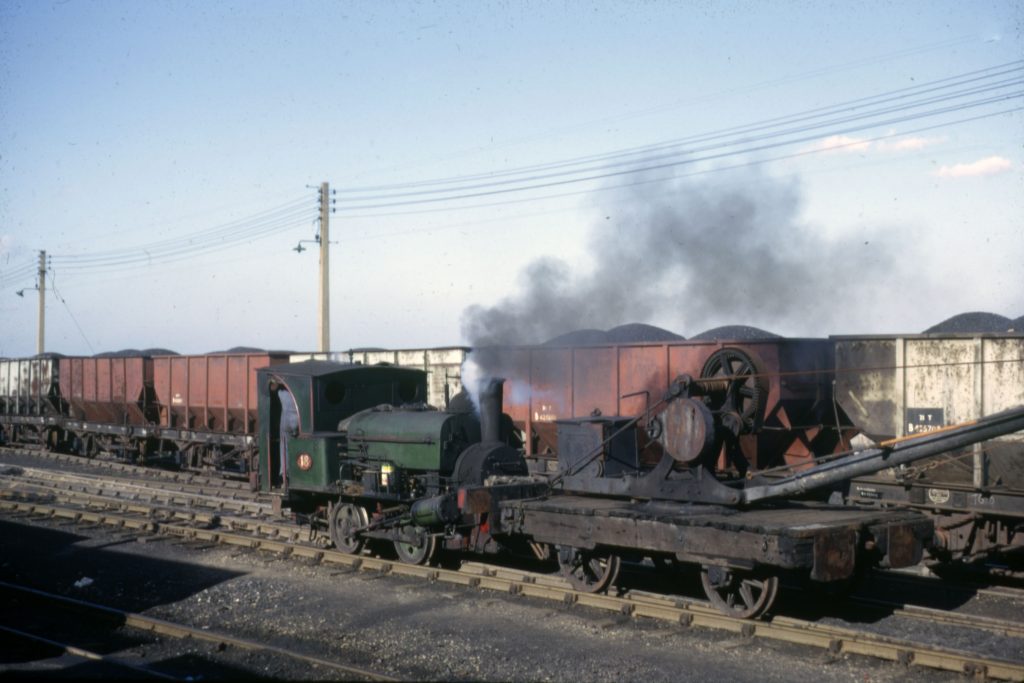


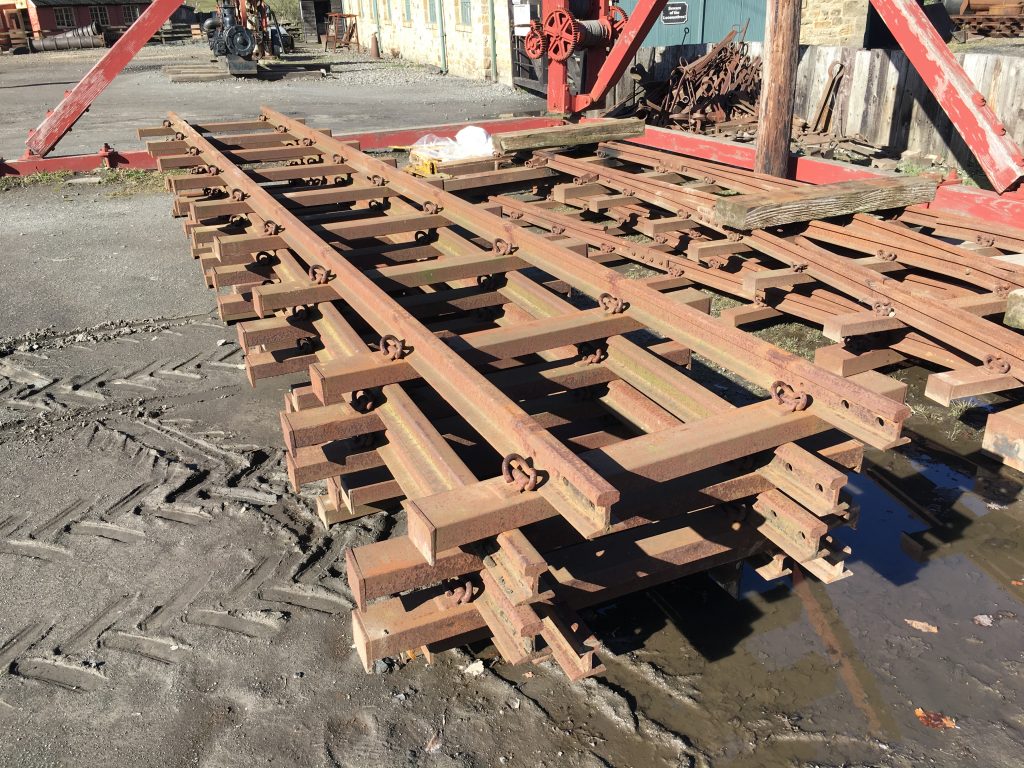


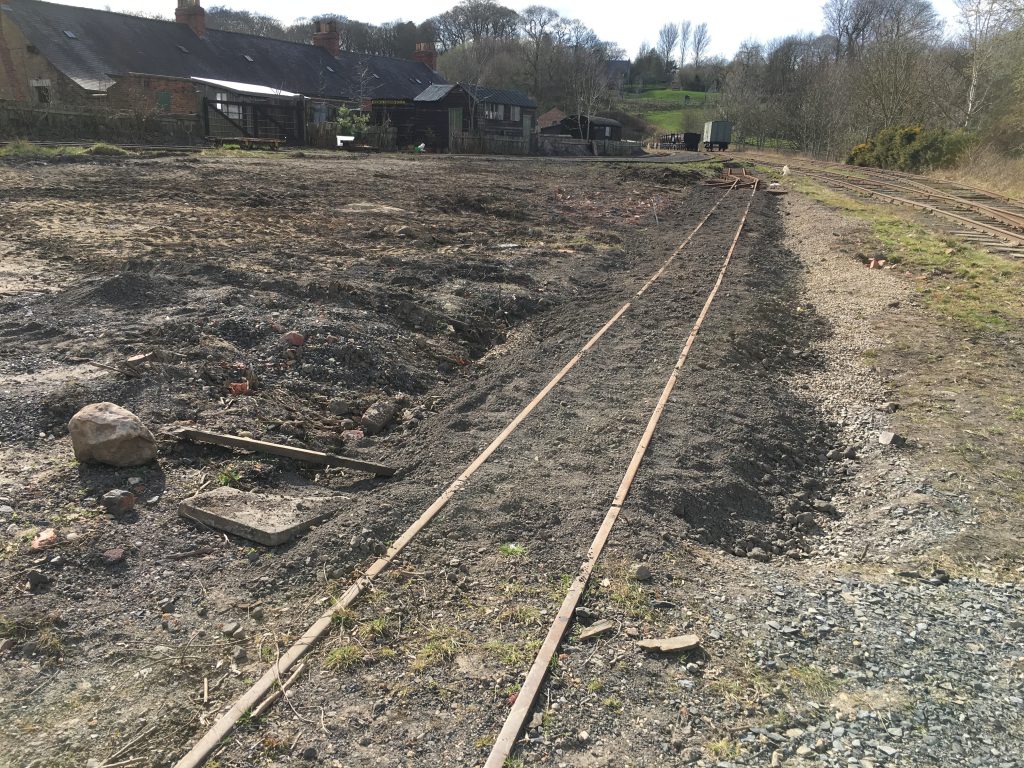
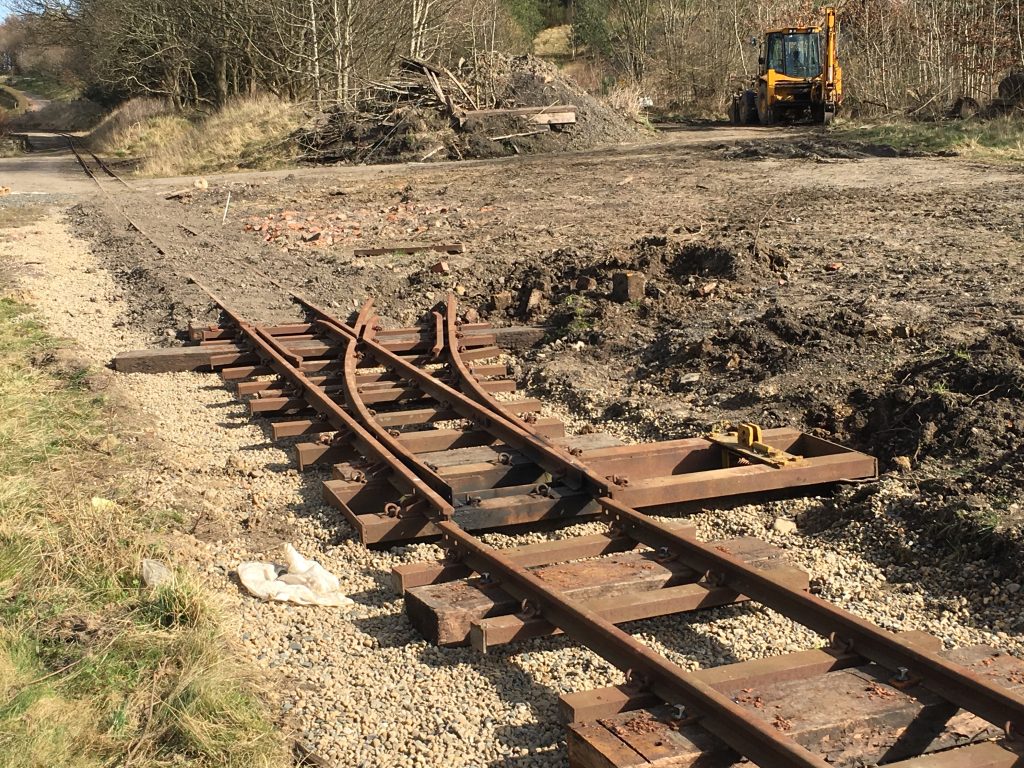
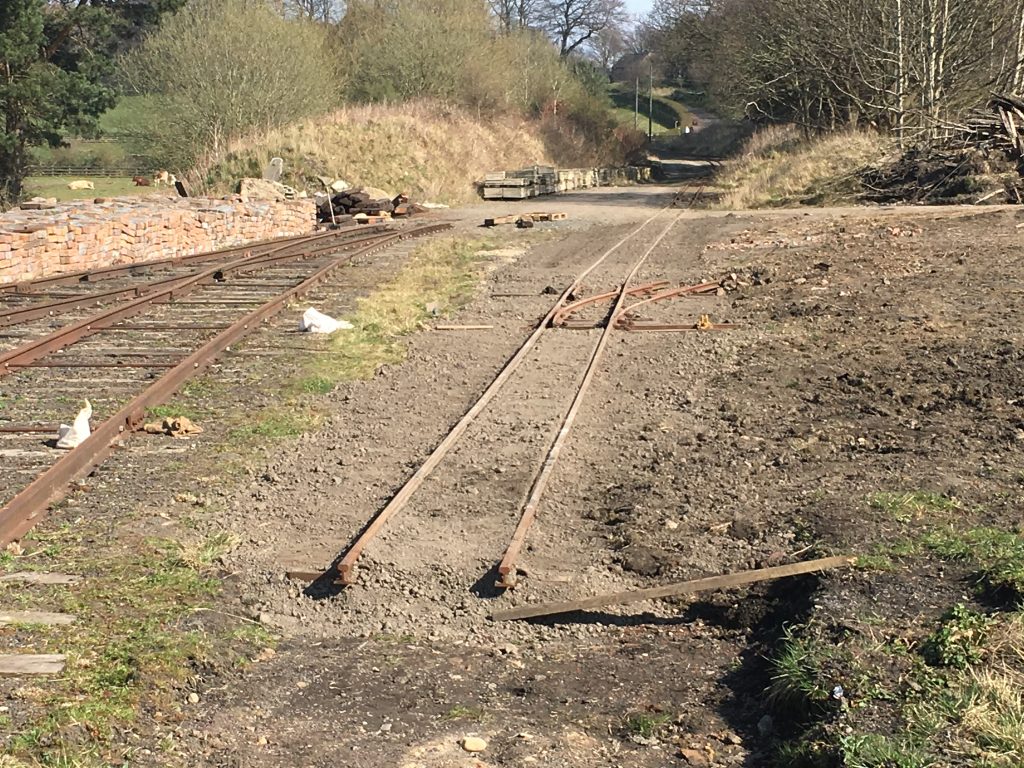
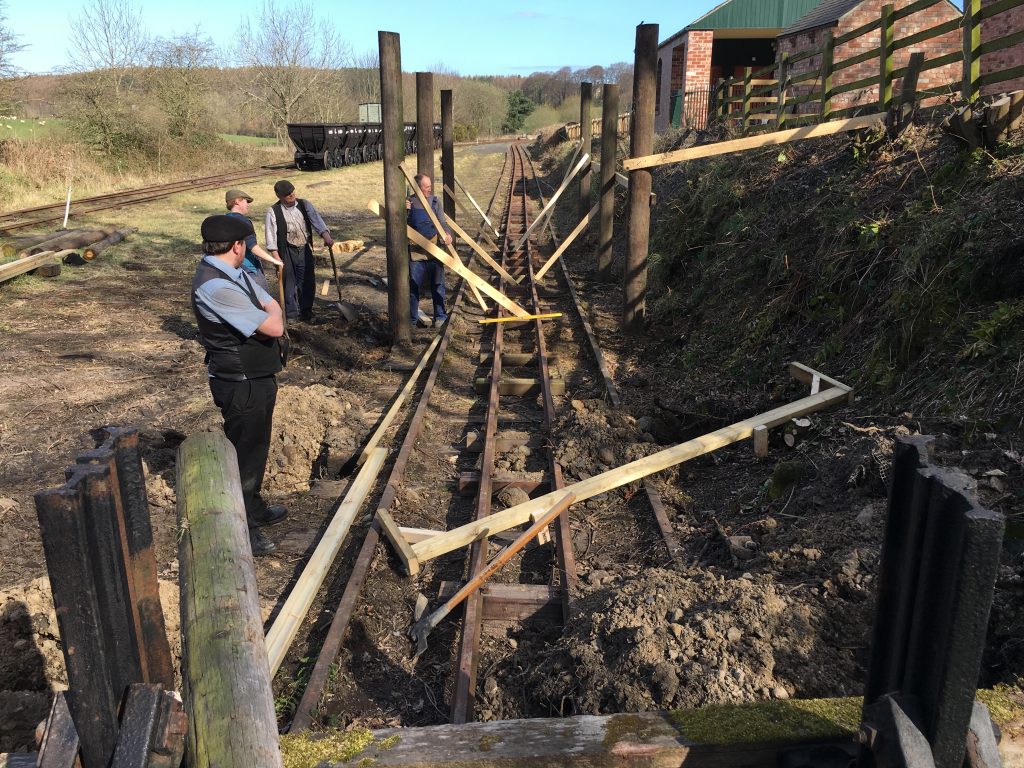
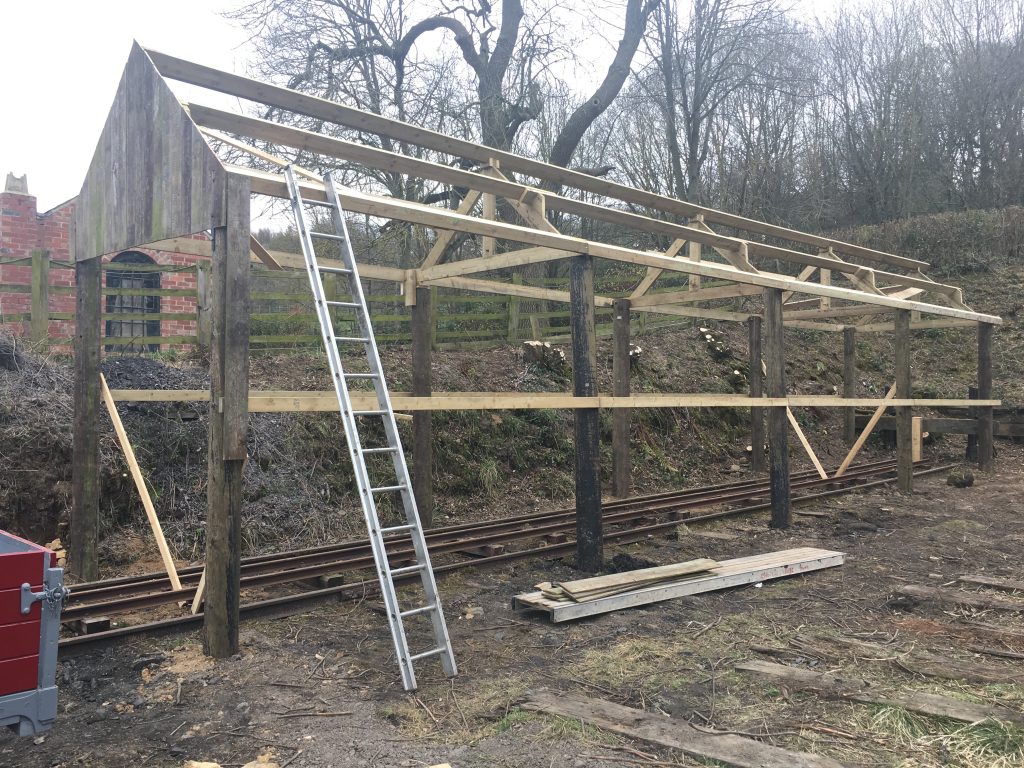

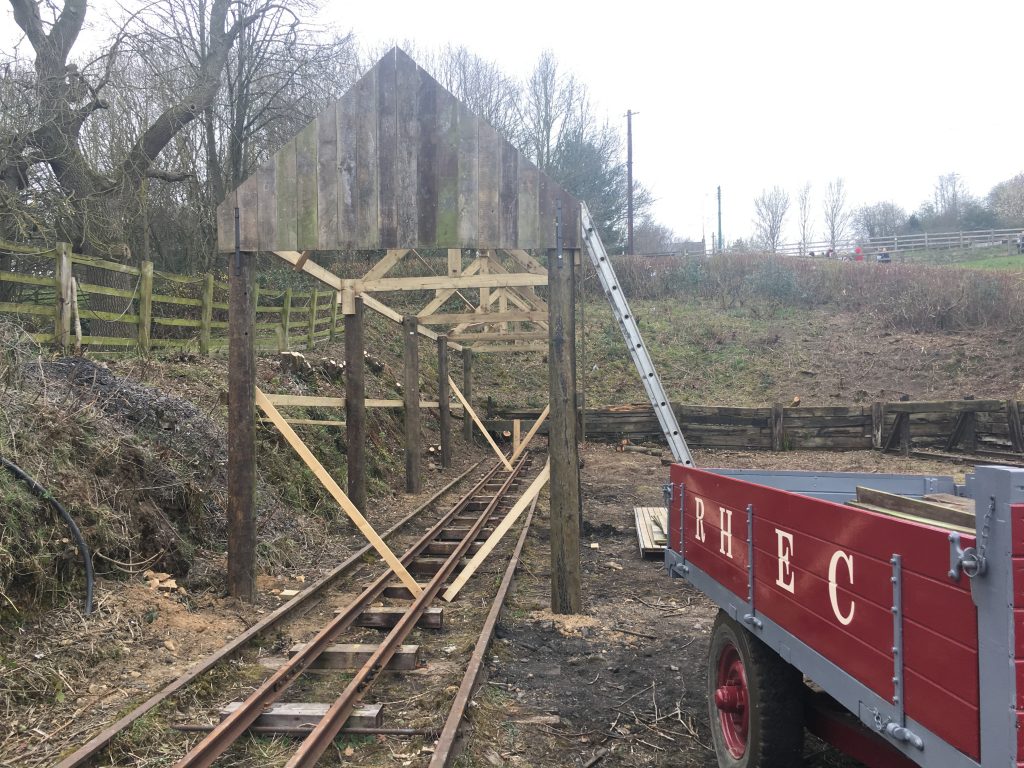


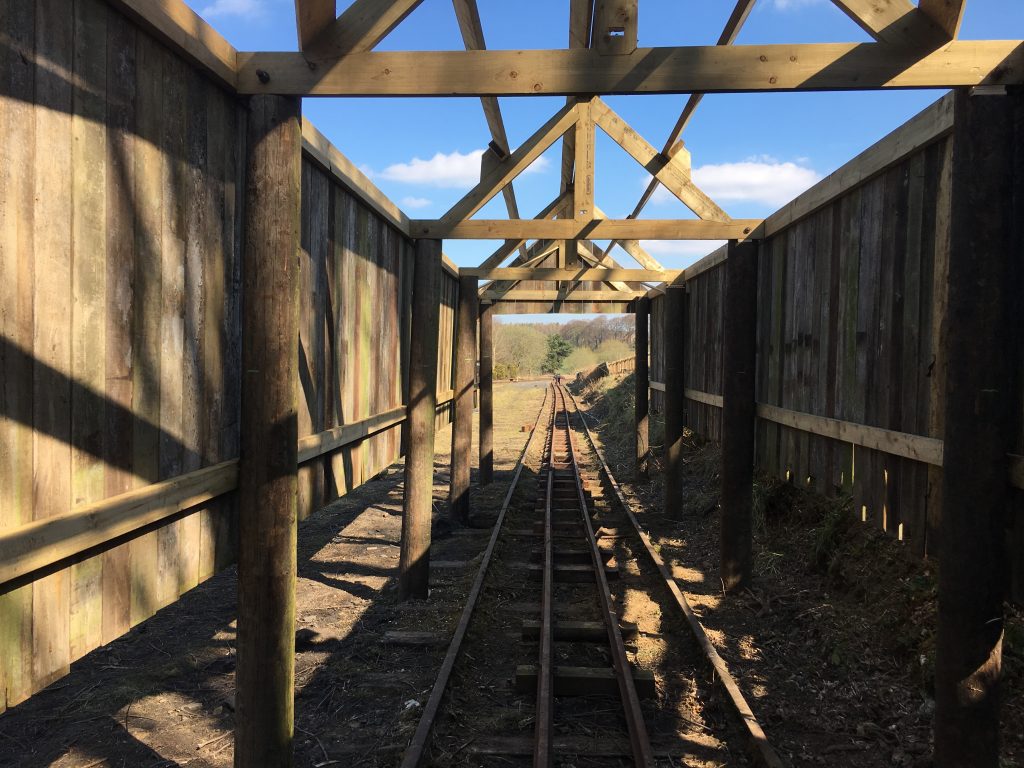
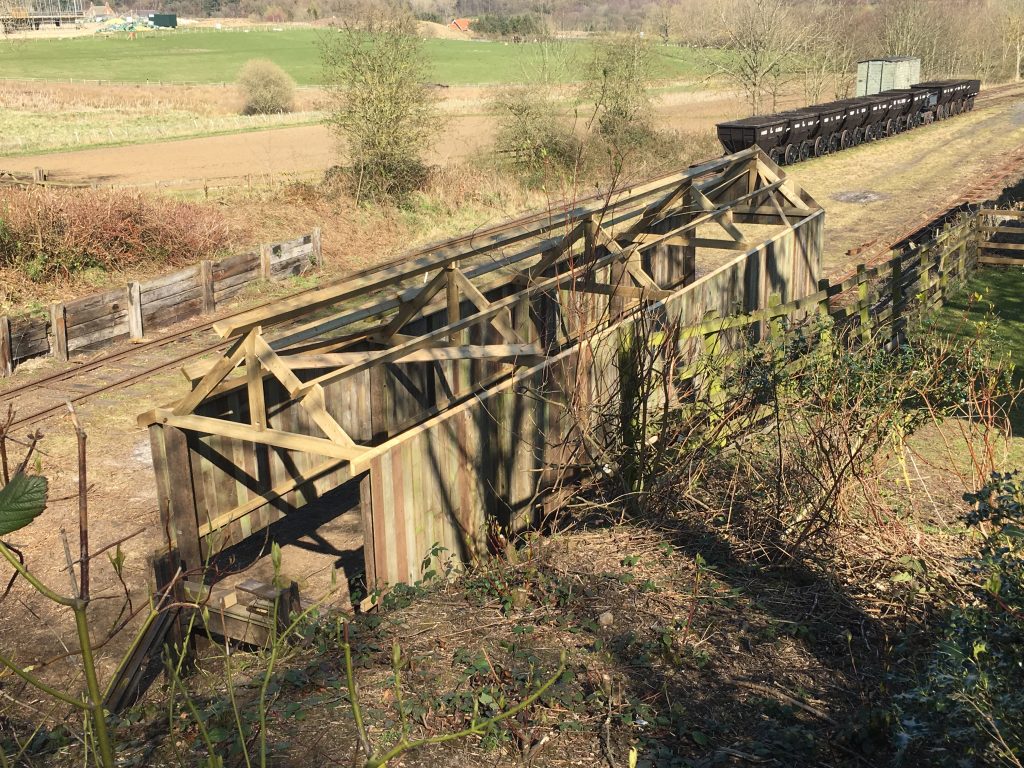
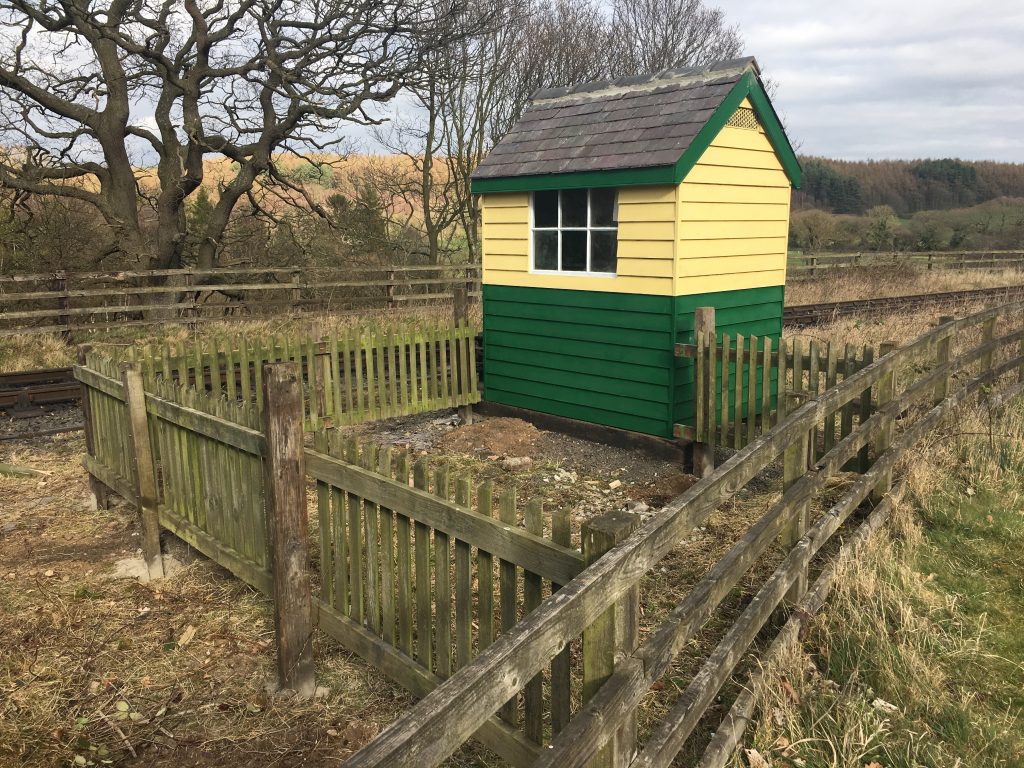

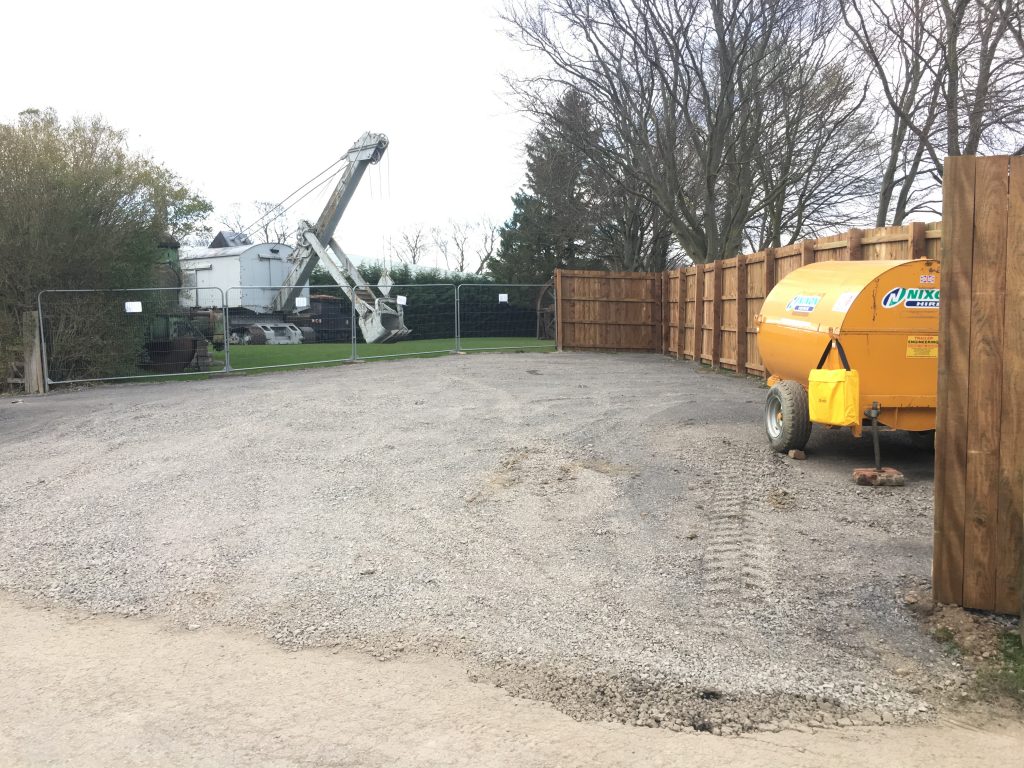
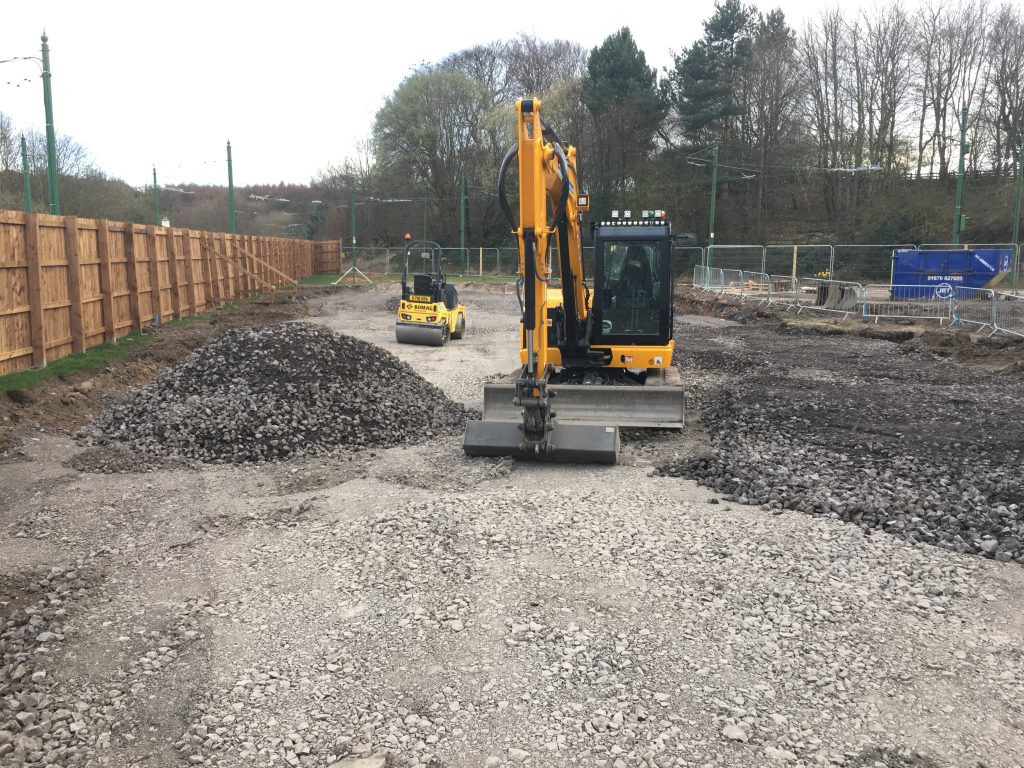





I visited on Wednesday and it was great to see so much progress on developments. It was also good to see Sunderland 16 out on the track after it recent issues. Is Sheffield 264 close to being reactivated as the truck looks to be assembled but minus motors.
Looking forward to seeing the bus depot completed and what will be accommodated inside it!
T & I News No. 8 is exciting. Thanks in particular to the ‘unsung heroes’ who are preparing covered accomodation for the unique (and irreplaceable) chauldrons when they are not in operation.